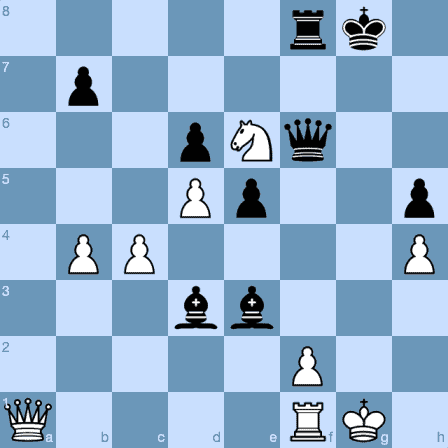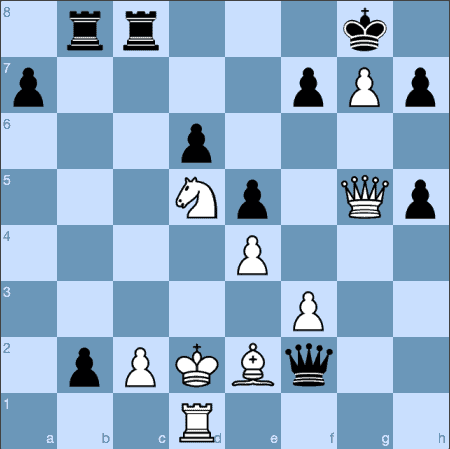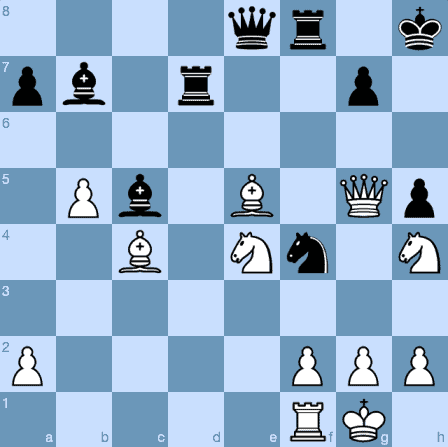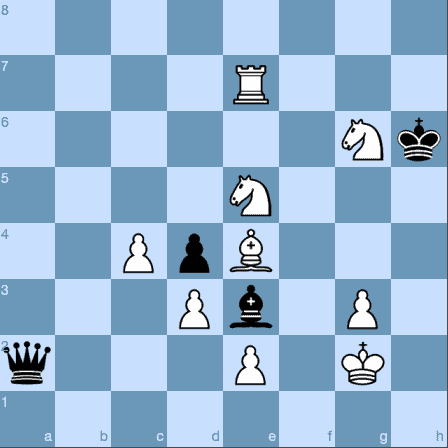Checkmate Monday is here again and this time we are going upmarket as we examine a case of Checkmate by Royal Appointment.
Before we look at the main example, which shows the white king strolling cooly up the board to help the queen deliver checkmate, we have a prelude featuring a related theme.
Speed Chess Challenge
In 1987 Garry Kasparov, who had been World Champion for just two years at this point, contested the Speed Chess Challenge match with Nigel Short.
Everyone understands what Rapidplay chess is all about here in 2021, but back in 1987 it was still early days for this emerging genre of chess.
The games were shown on primetime television in the UK, thanks to a collaborative effort by Thames Television and Channel 4. The latter was the new kid on the block, having being launched in 1982 (Channel 5 didn’t appear until 1997).
With Tony Bastable as the presenter, Bob Wade as the Arbiter and Ray Keene as the commentator, the Speed Chess Challenge provided excellent entertainment for the otherwise TV-starved chess fans, still lamenting the passing of The Master Game (1976-1983).
Kasparov and Short played for the London Docklands Speed Chess Challenge Trophy. They alternated between black and white tuxedos, to match their respective colours in each game.
The 13th World Champion raced to a 2-0 lead but the third game brought a notable victory for Nigel Short.
Nigel Short’s Memorable Plan
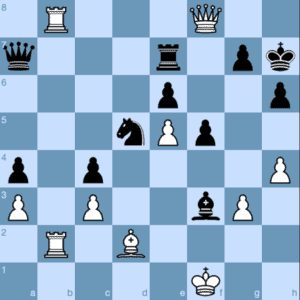
Garry Kasparov – Nigel Short
Game 3, Speed Chess Challenge
London, 1987
Short sacrificed the exchange and allowed Kasparov to infiltrate on the back rank with two major pieces. Yet an examination of the position reveals that all is not well in White’s camp. His king is rather exposed and it is under pressure from Short’s queen, knight and bishop. Short’s rook is doing a remarkably good job of blocking Kasparov’s queen out of the action and the black king is in a very safe position.
In his commentary, Ray Keene was becoming optimistic for Short’s chances – especially as he had a healthy advantage on the clock. Ray mentioned the remarkable possibility of a direct attack by the black king and then Short suddenly played…
45…Kg6
The path is clear; Black intends 46…Kh5 and 47…Kg4.
Kasparov suddenly looked concerned.
46.Bc1
To give the rook defensive scope along the second rank.
46…Kh5
Ray commented: ‘If Nigel wins this game it’s going to go into the history books.’
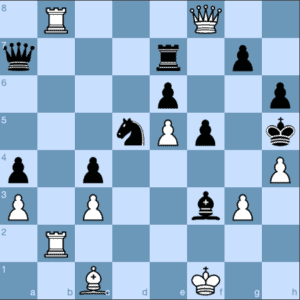
Kasparov tried to change the trend of the game but it doesn’t turn out well for him.
47.Ra8 Qc5
48.Rc8 Qxa3
49.g4+
Desperation. If Short captures the pawn with the king then at least Kasparov can play 50.Rxc4 with a check.
49…Bxg4!
50.Rxc4
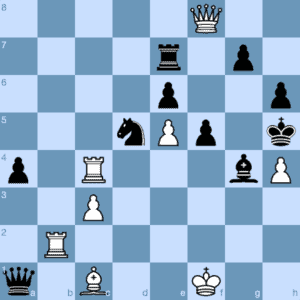
50…Qa1!
A powerful move, pinning the bishop to the king. 51.Rc2 defends the bishop but then 51…Qb1 forks the rook and the bishop. Kasparov resigned; 0-1.
Kasparov took his revenge in the next two games but then Short won again in the sixth and final encounter, to make the final score a very respectable 4-2 to Kasparov.
Nigel Short’s intention to march has king all the way into Kasparov’s position is a very entertaining and instructive plan. It didn’t come to fruition in this particular case because as a wounded Kasparov flailed, a more efficient winning line appeared.
However, the idea is memorable and it resurfaced in another of Short’s games, four years later.
This leads us to the most famous example of a king marching up the board in the middlegame, despite the board being packed with pieces.
The Plan Reaches Its Full Potential
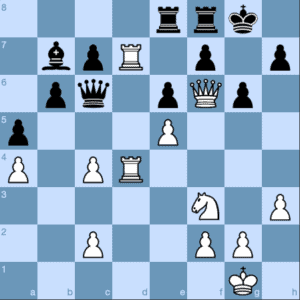
Nigel Short – Jan Timman
15th Interpolis Tournament
Tilburg, 1991
It is clear to see that the black king lacks protecting on the dark squares. However, White lacks a dark-squared bishop to, so it is not immediately apparent which white piece(s) are going to help the queen create serious checkmating threats.
The next two moves don’t give Short’s plan away, as they could easily be classed as being a little bit of ‘tidying up.’
30.h4 h5
Black has to react here, otherwise 31.h5, with the idea of 32.h6 and 33.Qg7 checkmate, will swiftly follow.
31.Kh2 Rc8
Protecting the c-pawn to relieve the black queen of the duty. However, this turns out to be yet another case of ‘fiddling while Rome burns’.
32.Kg3!
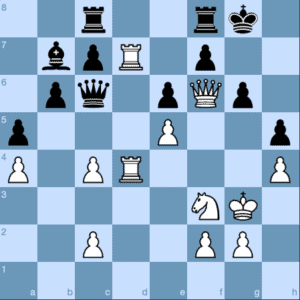
Suddenly, the point of Short’s previous moves become clear. The king is going to march up to h6, in preparation of Qg7 checkmate. Black is powerless to prevent this winning attack from taking place.
32…Re8
33.Kf4 Bc8
Attacking the rook. Will White be distracted?
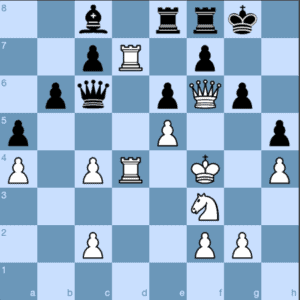
34.Kg5!
No! The rook can safely be offered as a sacrifice, as 34…Bxd7 35.Kh6 leaves Black facing an unstoppable checkmate in the form of the aforementioned 35.Qg7. Checkmate by Royal Appointment!
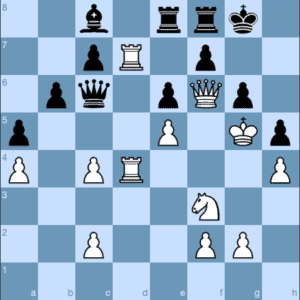
34…Kh7 only delays the inevitable, as 35.Qxg6+ exploits the pin by the rook on the f-pawn. Timman resigned here; 1-0.
This fulfils my promise to balance up the two checkmates against Nigel Short in a previous episode of Checkmate Monday.
Chessable Course
There are many more beautiful checkmating patterns in our course, The Checkmate Patterns Manual, by International Master John Bartholomew and CraftyRaf. This course won third place in our Chessable Awards for 2020.
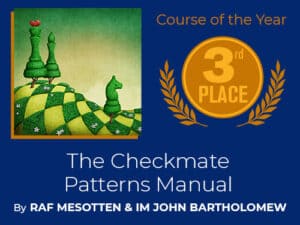
There is a shortened, free version of the course here.




